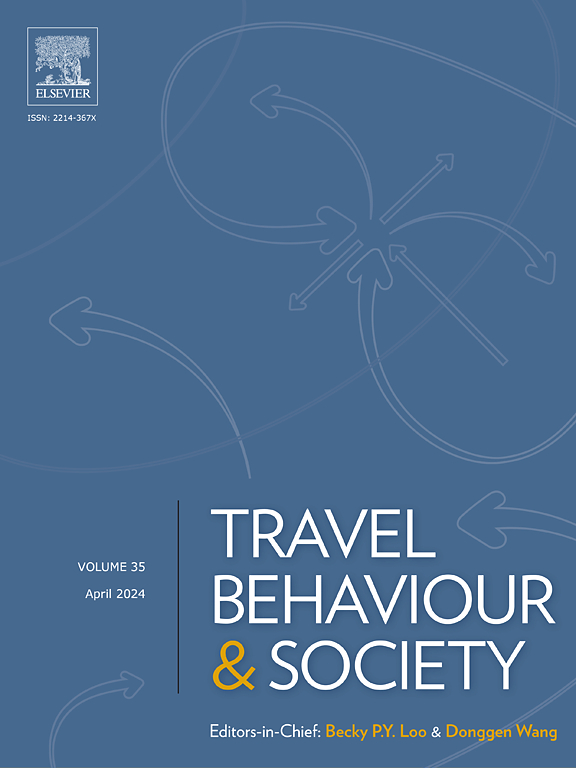Impact of spatial function complementarity on outshopping flows: A spatial interaction model
IF 5.1
2区 工程技术
Q1 TRANSPORTATION
引用次数: 0
Abstract
Outshopping behaviour, defined as consumers traveling outside their local areas for shopping, is a pervasive phenomenon. Understanding the interaction between outshopping and urban spatial structure is critical for urban, retail, and transport planning. In the case of Shenzhen, China, this study mapped outshopping patterns using real-time visitation data from 97,682 records across 138 shopping malls. By leveraging spatial interaction models, this study examined how urban structure moderates the influence of spatial function complementarity (SFC) on outshopping flow volume. The findings reveal that outshopping flows predominantly occur within central areas, followed by flows from suburban areas to central zones. The effects of SFC on outshopping flow volume vary depending on the direction related to urban structure, underscoring the role of urban structure in shaping outshopping patterns. This study advocates for nuanced policy responses that differentiate between daily-life consumption and high-level shopping behaviour. It calls for a spatially equitable provision of commercial facilities to balance local demand satisfaction while strategically supporting SFC for high-level shopping behaviour when promoting X-minute city.
空间功能互补性对外购流的影响:一个空间互动模型
外出购物行为,即消费者到当地以外的地方购物,是一种普遍现象。了解外购与城市空间结构之间的相互作用对城市、零售和交通规划至关重要。以中国深圳为例,本研究利用来自138个购物中心的97,682条记录的实时访问数据绘制了外出购物模式。利用空间相互作用模型,研究了城市结构如何调节空间功能互补性(SFC)对外出购物流量的影响。研究结果表明,外购流动主要发生在中心地区,其次是郊区向中心地区的流动。SFC对外出购物流量的影响随与城市结构相关的方向而变化,突出了城市结构对外出购物模式形成的作用。这项研究主张采取细致入微的政策应对措施,区分日常消费和高级购物行为。它要求在空间上公平地提供商业设施,以平衡本地需求满意度,同时在推广x分钟城市时策略性地支持证监会的高水平购物行为。
本文章由计算机程序翻译,如有差异,请以英文原文为准。
求助全文
约1分钟内获得全文
求助全文
来源期刊

Travel Behaviour and Society
TRANSPORTATION-
CiteScore
9.80
自引率
7.70%
发文量
109
期刊介绍:
Travel Behaviour and Society is an interdisciplinary journal publishing high-quality original papers which report leading edge research in theories, methodologies and applications concerning transportation issues and challenges which involve the social and spatial dimensions. In particular, it provides a discussion forum for major research in travel behaviour, transportation infrastructure, transportation and environmental issues, mobility and social sustainability, transportation geographic information systems (TGIS), transportation and quality of life, transportation data collection and analysis, etc.
 求助内容:
求助内容: 应助结果提醒方式:
应助结果提醒方式:


